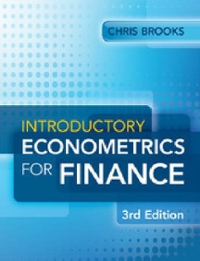

(Capital gains tax) The J. Harris Corporation is considering selling one of its old assembly machines. The machine, purchased for $20,000 6 years ago, had an expected life of 10 years and an expected salvage value of zero. Assume Harris uses simplified straight-line depreciation (depreciation of $2,000 per year) and could sell this old machine for $28,000. Also assume Harris has a 32 percent marginal tax rate. a. What would be the taxes associated with this sale? b. If the old machine were sold for $18,000, what would be the taxes associated with this sale? c. If the old machine were sold for $8,000, what would be the taxes associated with this sale? d. If the old machine were sold for $5,000, what would be the taxes associated with this sale? (New project analysis) The Chung Chemical Corporation is considering the purchase of a chemical analysis machine. Although the machine being considered will result in an increase in earnings before interest and taxes of $30,000 per year, it has a purchase price of $200,000, and it would cost an additional $7,000 to properly install the machine. In addition, to properly operate the machine, inventory must be increased by $9,000. This machine has an expected life of 10 years, after which it will have no salvage value. Also, assume simplified straight-line depreciation and that this machine is being depreciated down to zero, a 32 percent marginal tax rate, and a required rate of return of 13 percent. a. What is the initial outlay associated with this project? b. What are the annual after-tax cash flows associated with this project for years 1 through 9? c. What is the terminal cash flow in year 10 (what is the annual after-tax cash flow in year 10 plus any additional cash flows associated with the termination of the project)? d. Should this machine be purchased? a. What is the initial outlay associated with this project? $ (Round to the nearest dollar.) b. What are the annual after-tax cash flows associated with this project for years 1 through 9 (note that the cash flows for years 1 through 9 are equal)? $ (Round to the nearest dollar.) c. What is the terminal cash flow in year 10 (what is the annual after-tax cash flow in year 10 plus any additional cash flows associated with the termination of the project)? $(Round to the nearest dollar.) d. What is the project's NPV given a required rate of return of 13 percent? $(Round to the nearest dollar.) Should this machine be purchased? (Select the best choice below.) O A. No. The project's NPV is negative. O B. Yes. The project's NPV is positive. (Capital gains tax) The J. Harris Corporation is considering selling one of its old assembly machines. The machine, purchased for $20,000 6 years ago, had an expected life of 10 years and an expected salvage value of zero. Assume Harris uses simplified straight-line depreciation (depreciation of $2,000 per year) and could sell this old machine for $28,000. Also assume Harris has a 32 percent marginal tax rate. a. What would be the taxes associated with this sale? b. If the old machine were sold for $18,000, what would be the taxes associated with this sale? c. If the old machine were sold for $8,000, what would be the taxes associated with this sale? d. If the old machine were sold for $5,000, what would be the taxes associated with this sale? (New project analysis) The Chung Chemical Corporation is considering the purchase of a chemical analysis machine. Although the machine being considered will result in an increase in earnings before interest and taxes of $30,000 per year, it has a purchase price of $200,000, and it would cost an additional $7,000 to properly install the machine. In addition, to properly operate the machine, inventory must be increased by $9,000. This machine has an expected life of 10 years, after which it will have no salvage value. Also, assume simplified straight-line depreciation and that this machine is being depreciated down to zero, a 32 percent marginal tax rate, and a required rate of return of 13 percent. a. What is the initial outlay associated with this project? b. What are the annual after-tax cash flows associated with this project for years 1 through 9? c. What is the terminal cash flow in year 10 (what is the annual after-tax cash flow in year 10 plus any additional cash flows associated with the termination of the project)? d. Should this machine be purchased? a. What is the initial outlay associated with this project? $ (Round to the nearest dollar.) b. What are the annual after-tax cash flows associated with this project for years 1 through 9 (note that the cash flows for years 1 through 9 are equal)? $ (Round to the nearest dollar.) c. What is the terminal cash flow in year 10 (what is the annual after-tax cash flow in year 10 plus any additional cash flows associated with the termination of the project)? $(Round to the nearest dollar.) d. What is the project's NPV given a required rate of return of 13 percent? $(Round to the nearest dollar.) Should this machine be purchased? (Select the best choice below.) O A. No. The project's NPV is negative. O B. Yes. The project's NPV is positive








